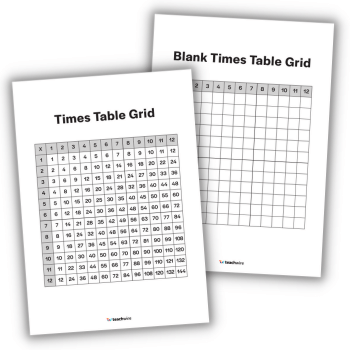Differentiation in maths – How you can make it work

It may have a bad rep in edu circles, but this pedagogical approach is due a glow-up

- by Lisa Coe

Differentiation. This single word can send a shudder down the spine of the most hardened maths lead. The term has been packed in some forgotten corner along with VAK (visual, auditory and kinaesthetic), must / should / could, and Brain Gym, and in some parts has even been banned.
But I think differentiation has a bad reputation. During its journey it fell in with the wrong crowd, got blamed for things it (often) didn’t do, and ended up so covered in metaphorical mud it was shunned from educational circles.
I want to bring it back. It’s time differentiation had an edu glow-up.
Let’s start by brushing it down and going back to basics. Differentiation means addressing learner variance. Sue Cowley, in The Ultimate Guide to Differentiation, puts it perfectly: ‘It is the subtle, flexible and responsive approaches you use that are the nuts and bolts of everyday differentiation’.
The flexibility is key here; differentiation can sometimes be considered rigid and pre-designed, and is sometimes blamed for placing a ‘ceiling’ on learning. But differentiation in the moment, using formative assessment to react to what is in front of you? That’s powerful stuff.
Now consider the terms ‘scaffolding’ and ‘adaptive teaching’. Somehow we’re OK with these – for now. Adaptive teaching even appears in the new Early Career Framework (ECF), which says teachers should be ‘adapting lessons, whilst maintaining high expectations for all, so that all pupils have the opportunity to meet expectations’. If that’s not addressing learner variance – aka differentiation – then I am not sure what is.
Whatever you call it, and however you think about it, here are some quick and easy ways to differentiate in maths and provide more learners with independently-gained success:
1. Provide a safety net
Some pupils don’t know their number bonds and times tables. Intervention, additional teaching and practice supports this, but when they need to apply that knowledge learners can become unstuck.
If children are learning about equivalent fractions, then knowledge of multiplication facts is one key aspect to be able to efficiently find equivalence.
Differentiation here consists of providing a times table grid for those learners you know aren’t secure in multiplication facts. Or providing specific multiplication tables to support them with the examples you will use.
2. Representation math
With the rise of mastery teaching in mathematics, representations are becoming more commonplace in the classroom, and it’s pretty standard to use them when modelling.
For example, a Y4 teacher might use bar models to represent improper fractions, providing a clear visual as to ‘how many wholes’ the improper fraction is equal to.
Often when it comes to independent work, however, we provide abstract questions and expect pupils to draw or visualise their own representations.
But some learners need these representations, such as a picture of Dienes to show the number, a bar model, or a ‘first, then, now’ picture story of the problem. Differentiating in this way allows all pupils to access the same mathematical problems, with some being supported to see the underlying structure.
3. Provide the answers
For some children, more complex worded problems or multi-step calculations can be cognitively challenging. Most of the time, the context of the problem can be daunting – I’m thinking of the ‘crocodiles and alligators’ assessment question.
Pupils have strategies for solving problems, but can become ‘bogged down’ in the context. Vocabulary acquisition can also provide challenges; if a pupil simply hasn’t been exposed to the language of the problem, they can use precious energy decoding.
To avoid this, provide the answers. You can do so in a number of ways, such as saying ‘the answer is __. Prove it’; asking pupils to match answers to questions, or providing a partial resolution (such as the first step in the working out).
When I mention this to teachers as a differentiation approach, I sometimes encounter fear – where’s the maths? Some pupils (and even teachers!) may consider this a ‘cheat’, and it’s a fair point, but if we consider differentiation as addressing learner variance, the variance here is that there is a language / context barrier and we want pupils to see the underlying structure of problems.
Children still have to work out how the answer is found – they are still ‘doing maths’, but with less pressure.
In essence, I think differentiation is ‘good teaching’ and what we do day in, day out. Teachers adapt to learner variance in myriad ways – large and small – and yet shy away from the word. Let’s call it what it is: we differentiate to allow our learners to succeed. And that’s no bad thing.
Lisa Coe is primary maths lead at the Inspiration Trust. Follow the Trust on Twitter @InspirationEast










